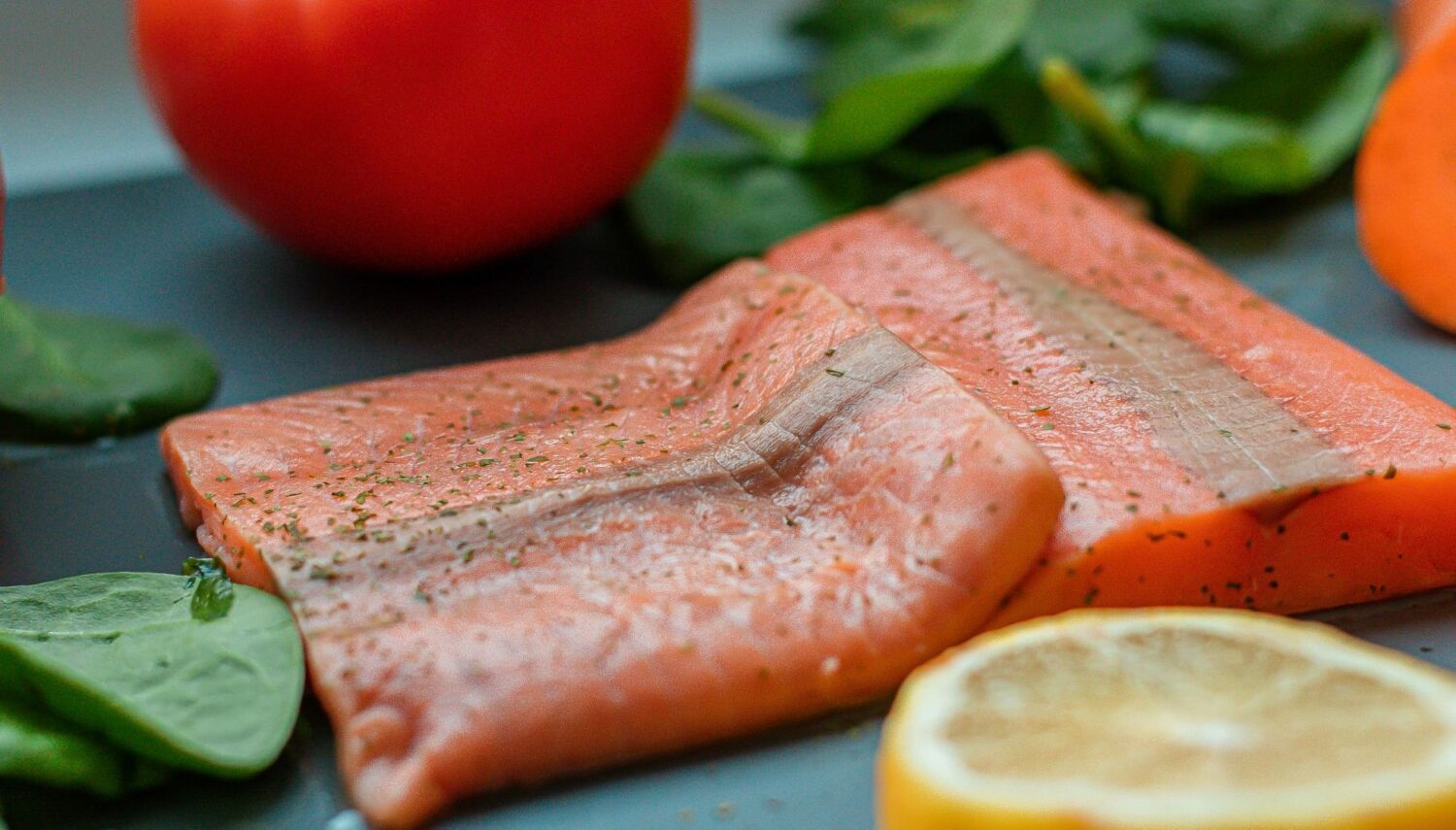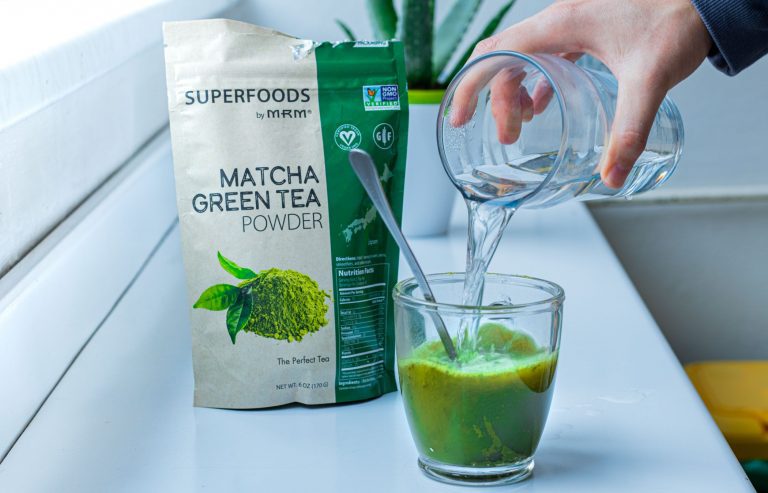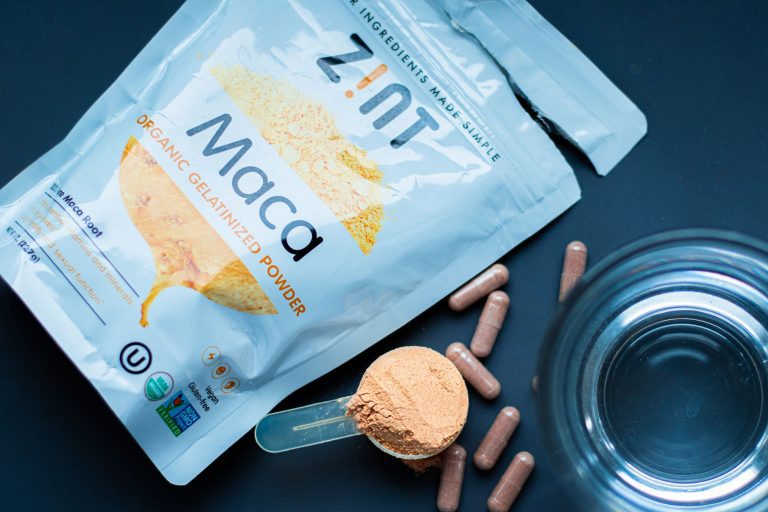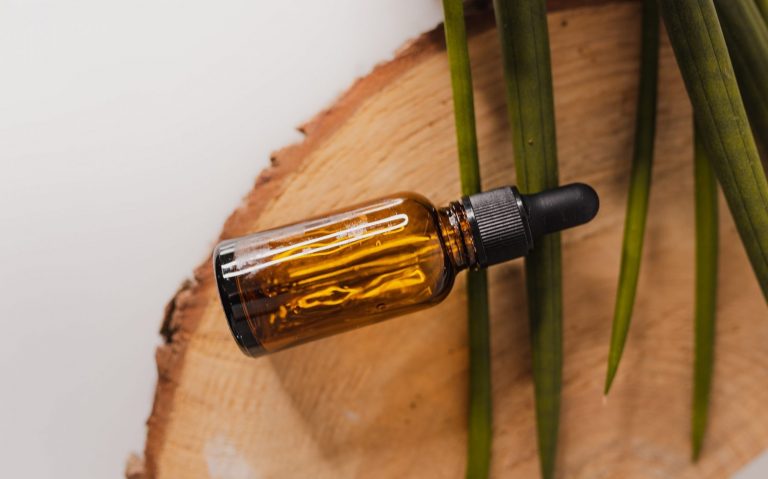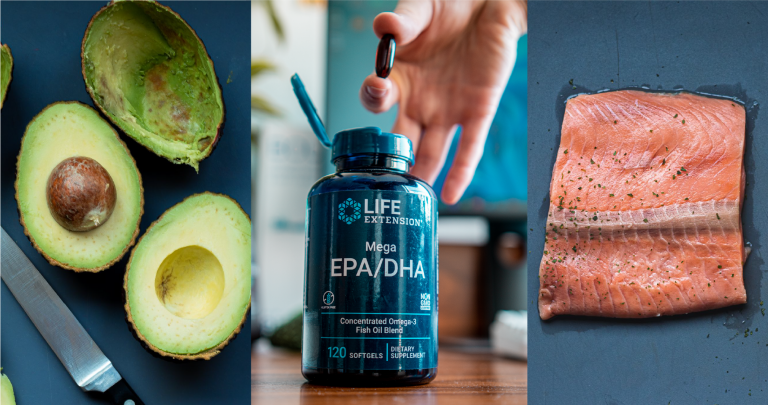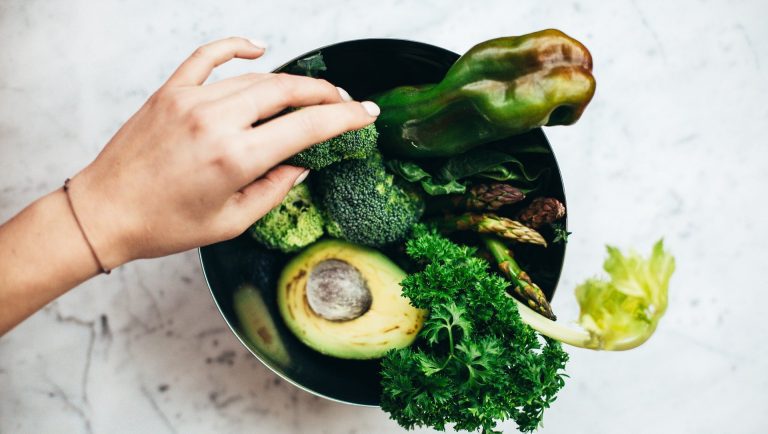The Pescatarian Diet: Foods, Benefits, Pros & Cons
The Pescatarian Diet
The Pescatarian diet is one of the most popular eating styles along with the Keto, Paleo, and Vegan diets. It is very similar to the vegetarian diet, with slight differences.
The pescatarian diet combines plant-based foods with fish & seafood, which is even better and less restrictive than the vegan diet itself, for which the risk of running into nutritional deficiencies is higher.
Pescatarians are usually more health-conscious people who prefer healthy cooking styles, moderate amounts of food, mindful eating, and an active lifestyle. This can highly contribute to one’s health and well-being.
Types of Vegetarian Diets
Pescatarians are a type of vegetarian, so it comes in handy to understand the slight differences in the complex names such as lacto-ovo-vegetarian.
So Pesce means fish in Italian, which means fish & seafood are allowed choices and may dominate the diet.
Vegetus means whole, alive and fresh, comes from Latin. In Vegetarian diet vegetables are the base, while meat and animal products are excluded. Vegetus In English also relates to vegetable, but the Indian word for it refers to a bad hunter representing someone who does not eat meat.
Diets have become a lot more versatile and flexible so different people who have different needs can choose the one that fits them. This is how diets have spread out, specified, and evolved into new branches.
Vegan
Ovo Vegetarian
Lacto-Ovo Vegetarian
Pescatarian
Flexitarian
Vegan – More restrictive & healthy diet, allowing only plant-based products while excluding all animal products such as dairy, egg, fish, and meat. One of the most popular diets in the world emphasizes eating vegetables, fruits, beans, legumes, herbs, nuts, and seeds.
Ovo Vegetarian – a diet which allows consumption of eggs – OVO, but still excludes any other white or red meat, fish, seafood, and dairy.
Lacto-ovo vegetarian is a combination of ovo, which refers to eggs and lacto which stands for dairy, lactose products. So lacto-ovo vegetarian exclude all meat while eating animal products such as dairy and eggs for health reasons.
Pescatarian or Pescetarian is a more versatile and flexible diet that allows fish & seafood products, while being open to dairy and eggs, but does not necessarily include them. Still avoids red and white meat, in my opinion, the best one to reduce potential malnutrition in zinc and omega-3 fatty acids.
Flexitarian – that’s a flexible vegetarian which occasionally allows meat or other animal products in its diet.
Foods to Eat
Pescatarian-friendly foods include fresh plant-based products with grains, beans, legumes, and seafood & fish. While some pescatarians do eat dairy or eggs, we’ll list these foods as optional since they are not included in the traditional pescatarian diet. Pescatarian is a Vegetarian who eats fish and seafood, that’s why. Officially adding the lacto word is for dairy and ovo word for eggs consumption.
Here is a list of allowed foods on a Pescatarian diet.
| Whole grains | Quinoa, rice, brown rice, buckwheat, rye, wild rice, wheat, beef, barley |
| Fish | mackerel, herring, salmon, squid, tuna, Pollock, whitefish, sardine |
| Seafood | crab, lobster, octopus, squid, shrimps, mussel, abalone, clams and oysters |
| Green Leafy Vegetables | spinach, lettuce, collard greens, cabbage, arugula, bok choy |
| Starchy veggies | sweet potatoes, yams, squish, corn, pumpkin |
| Non-starchy veggies | asparagus, mushroom, broccoli, cauliflower, cucumbers, peppers |
| Fruits | apricot, peach, banana, pineapple, grapes, watermelon, quince, apple, avocado |
| Berries & Citrus fruits | blackberry, blueberries, orange, lemon, grapefruit, strawberries |
| Beans & Legumes | Red kidney beans, black beans, fava beans, peas, lentils, soybeans, quinoa |
| Nuts | cashews, almonds, walnuts, brazil nuts, peanuts, and pistachios |
| Seeds | chia seeds, flax seeds, sesame seeds, pumpkin seeds, hemp seeds and sunflower seed |
| Healthy Oils | olive oil, coconut oil, walnut or avocado oil |
| Nut-based milk | almond milk, cashew milk, coconut milk |
| Drinks | plant based drinks, hot cocoa, coffee, green tea, ginger water |
Can I eat poultry, dairy, and eggs on a Pescatarian Diet?
For those asking if poultry is allowed, usually, pescatarians do eat it on a weekly basis in lower quantity, and it can be part of the modern pescatarian diet since there is not a strict rule to avoid it.
Optional Foods
- Dairy & eggs: cheese, milk, yogurt, kefir, greek yogurt, eggs, butter
Foods to Avoid
Basically, all meats and some animal products are to avoid, but for a healthier outcome, I highlighted two other groups which are not part of a healthy diet, but might be pescatarian-friendly (check for *).
- Meat: chicken, turkey, duck meat, elk meat, beef, pork, bison, or any wild game meat
- Processed Junk foods & Red meats: salami, sausage, burgers, hotdogs, french fries, pizzas
- *Refined sugars and drinks: Sodas, Colas, Instant soups & coffee, milk chocolate, cakes, sweets
- *Baked goods & pastry: croissants, donuts, waffles, pies, muffins, and pound cakes
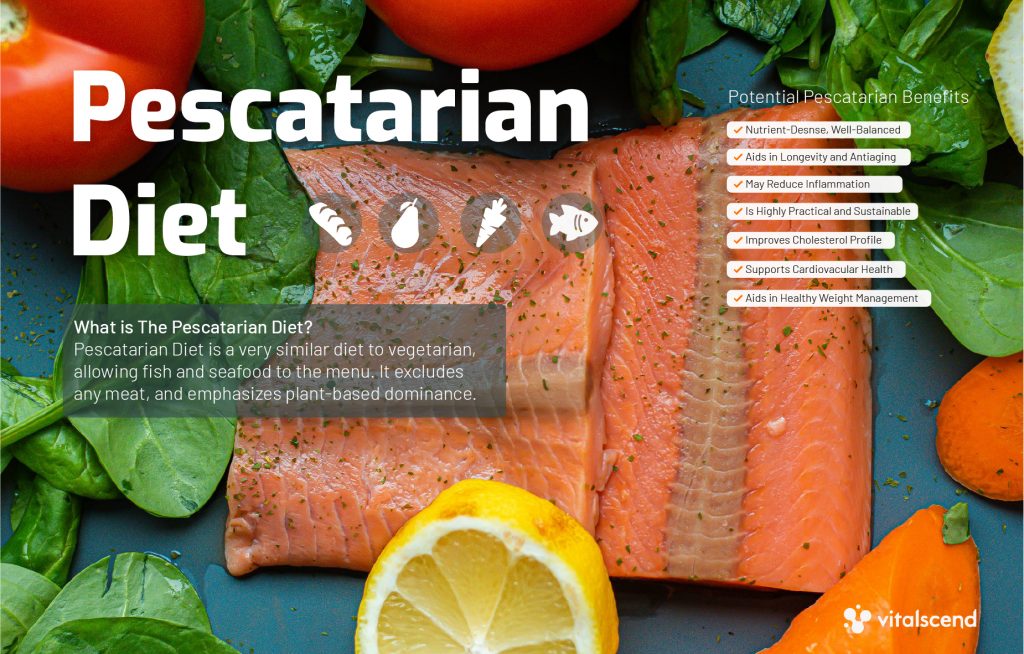
Pescatarian Food Pyramid
The foods at the base of a pyramid are those eaten mostly, on a daily basis. The higher you go you will reduce the intake of those foods. In fact, the pescatarian diet has no macronutrient, nor caloric restrictions and that’s why it is one of the more practical, versatile, and flexible diets.
| The Base | Whole grains & Vegetables, foods such as rice, buckwheat, barley, spinach, potatoes, bok chow, lettuce, carrots, cucumbers, peppers, onion, garlic, broccoli, cauliflower and so on. |
| The Middle | Beans & Legumes, Seafood & Fish, foods such as lentils, chickpeas, fava beans, red kidney beans, lobster, salmon, tuna, whitefish, crab & squid are included on a daily basis, almost always with the main lunch. |
| The Upper Middle | Fruits, Nuts, Seeds, Eggs and Beverages, foods included as a dessert or a side dish, foods such as apricot, banana, cashews, walnuts, dark chocolate, coffee, tea, flax or chia seeds, watermelon, and pineapple. |
| The Top | Desserts, Herbs & Spices and Alcohol: Basil, parsley, chili, cayenne pepper, wine, vegan-friendly desserts, cinnamon rolls, apple cake, dark chocolate & berries, pumpkin pie and others |
Pescatarian Plate Example
The typical Pescetarian meal plate looks like this:
30% whole grains
30% vegetables
20% seafood & fish
20% cheese, olive oil, herbs & spices
Additionally, the desserts or side dishes usually incorporate some:
- Wine, Coffee, Tea, Beer, or other plant-based drinks
- Nuts & seeds as a snack option, or side dish
- Fruits & chocolate for dessert
I will share a couple of recipes here with you, one of the most popular and highly enjoyed types, including desserts and side dishes.
Pescatarian-friendly meals:
| Salmon Burgers with garlic, tzatziki, lettuce, and lemon |
| Noodles, shrimp, and broccoli soup with basil |
| Baked peppers filled with feta cheese and parsley |
| Sweet potatoes with lobster in lemon and honey |
| Cheesy broccoli and cauliflower with sesame seeds and soy sauce |
| Tuna steak with chickpeas, red lentils, and asparagus |
| Whole wheat tortillas with mushrooms, shrimps, and onion |
| Crab with lemon, honey, and wild black rice |
| Salmon with cucumbers, pepper, tomato, and cheese salad |
| Sesame tofu, fava beans, and asparagus with lemon |
| Tortillas with red kidney beans, avocado, and lobster |
| Red Lentil soup with carrots, onion, and cayenne pepper |
What does a pescatarian diet consist of?
The pescatarian diet is very similar to the vegetarian diet, but it adds fish and seafood to the combinations. So, basically, think of a plant-based diet, but add dairy, fish and seafood options. It excludes red and white meat, meaning beef, chicken and pork are out of the menu.
What are the benefits of a pescatarian diet?
The pescatarian diet is quite a versatile, sustainable and practical diet. By following a pescatarian diet, the following benefits may be present:
– nutrient rich, well-balanced diet
– potential cancer protection
– reduced inflammation and oxidative stress
– aids in longevity and antiaging
– is pretty versatile, sustainable diet
– healthy weight management
– supports cardiovascular health
– improves cholesterol profile
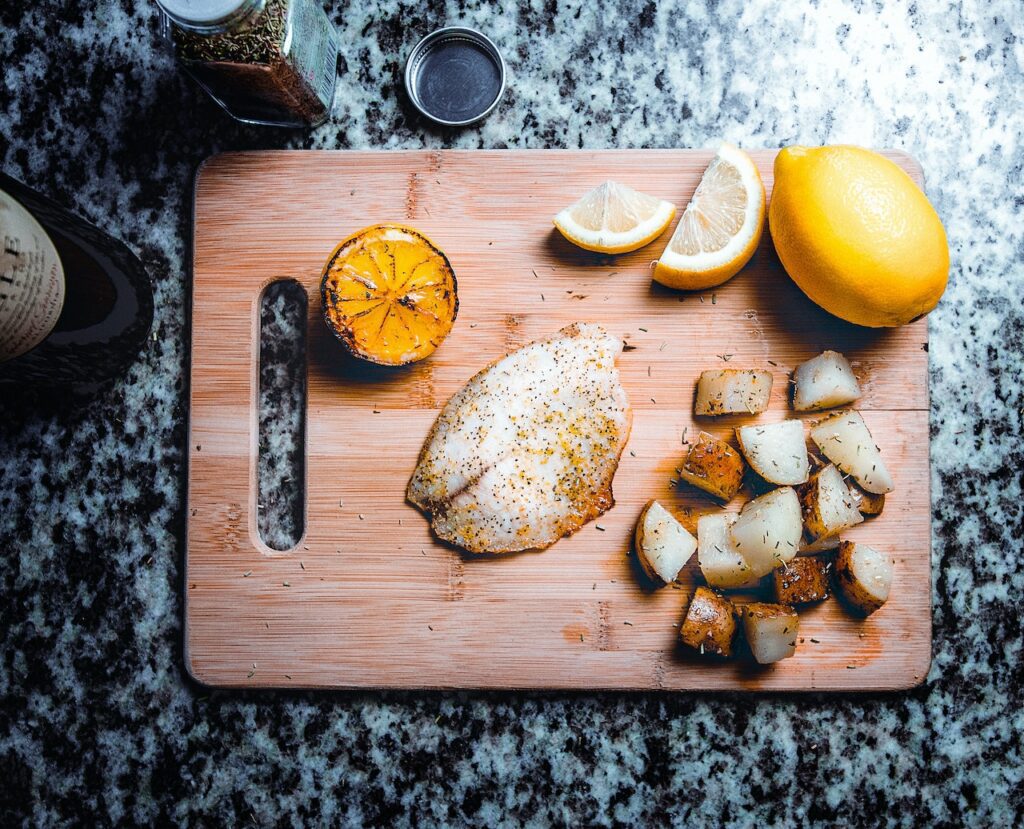
Health Benefits of Pescatarian Diet
The Pescatarian diet is a pretty versatile and healthy diet, considering it is on the list of more flexible diets offering a wide variety of foods and cooking styles including poaching, grilling, sautéing, and steaming.
Its versatility makes it more practical for the average consumer, and the health benefits you would get with this diet if you exclude processed vegan-friendly junk food are amazing.
The Pescatarian style of eating is similar to a Vegetarian and Mediterranean eating patterns, which are healthy and not restrictive such as keto, carnivore, or vegan style of eating.
Incorporating fish, seafood, and optionally eggs and dairy can enable everyone to beat the usual vegan malnutrition and deficiencies while providing heart-healthy benefits from excluding any meat like pork, chicken, turkey, and beef.
1. Provides tons of Nutrients
The Pescatarian diet is highly nutritious. If you look up the calorie count for plants or fish and the nutrients they provide, the pescatarian diet is pretty rich.
If you look up the most nutrient-dense foods, you will find a broad range of green leafy vegetables, seafood & fish, algae & seaweed, animal organs, eggs, and cocoa. Nutrient-dense means food is packed with a lot of nutrients per its weight, volume, or calories it provides.
The Pescatarian diet offers pretty lean options when it comes to fat. You are almost free of saturated fat, excluding all meat products. Occasional consumption of eggs or dairy keeps the level of saturated fats lower which may reduce the risk of coronary, heart disease.
On top of that, experts complain about protein bioavailability in vegan foods. Pescatarians have better protein options like seafood and eggs, they also have more nutrients, vitamins, and essential minerals such as zinc, b12, iron, and omega-3 fatty acids available in their diet.
2. May Lower Colorectal Cancer Risk
Since fish and seafood foods are pretty high in omega-3 fatty acids and these are known to improve heart health, pescatarian may be the diet for you.
Now before you make any strong conclusion, the data on this is not very strong, and not every pescatarian will necessarily eat heart-friendly.
There is a study on the protective effects of omega-3 on cancer. It has been shown that omega-3 PUFA supplementation might modulate some pivotal pathways which underlie secondary complications of cancer. Further data to confirm this is needed, but it is comforting to know that there is a potential to reduce inflammation through eating fish. (1)
In a case-controlled study, freshwater fish was associated with a lower risk of colorectal cancer. With more than a thousand eligible colorectal cancer cases in China, there was an inverse association between fresh fish and colorectal cancer risk, while no statistically significant changes were found with dried or salted fish intake. (2)
3. Can act anti-Inflammatory
The Pescatarian diet does not just include fish but also a lot of plants. The main superpower of this diet is to reduce inflammation, especially if you limit yourself to any processed vegan-friendly junk foods. There are 2 main components for reducing inflammation:
- Improving the anti-inflammatory effects, reducing oxidative stress, and preventing DNA damage
- Reducing toxic and processed foods which can increase inflammation
In fact, eating a wide variety of plants while including some omega 3-rich fish in your diet is more than enough to beat inflammation, of course with good amounts of water and plant liquids.
Research has shown both a – significant effects of omega 3 FA on reducing inflammation in people with hypertension, (3) and insignificant effect in healthy Australians, through fish consumption.(4)
However, a higher intake of plants rich in antioxidants can be helpful for reducing inflammation. Whether it’s vegan or pescatarian style of eating, including a bunch of plants, herbs & spices in your diet may improve antioxidant status and fight oxidative stress and chronic inflammation. (5)
4. Aids in Longevity & Anti-aging
When it comes to increasing healthspan, pescatarian is a good way to go. In fact, a lot of studies support that vegetarians may live longer lives than usual omnivores and since pescatarian is a branch of vegetarianism, including some seafood and fish might be even healthier. The reason for that is reducing the potential nutritional deficiencies and inflammation due to higher levels of Omega 3 fatty acid.
Two large and longitudinal studies on vegetarians who eat no meat but have a lower intake of fish & coffee, and higher of vegetables, fruits, whole grains legumes, nuts, and seeds.
Turns out that vegetarians and fish-eaters or pescetarians have 11-19% lower risk for all cancer, while vegans have 16% lower risk. Fish-eaters and pesco-vegetarians had lower mortality risk from ischemic heart disease and premature death. (6)
We know that fish is loaded with antioxidants, omega 3’s, zinc, protein, and other essential nutrients. There is evidence supporting that higher omega-3 levels in the blood may increase lifespan since it is associated with 27% reduced risk of overall mortality and 35% for heart diseases. (7)
5. is Environmentally sustainable
All the processes involved in raising an animal whose muscles we consider as meat in our diet take a lot more space, work, and emission which can be detrimental for our planet.
Aside from this, eating fish is known to reduce carbon footprint, since fishing and seafood haunting does not require the care of livestock and farmland.
The most fuel-efficient types of fish are mackerel and anchovy, per one ton averaging around 70-90 liters of fuel.
As we already mentioned, fish is more eco-friendly than raising beef due to carbon emissions. In general animal products have a lot higher negative effect on the planet than growing and reaping plants.
Vegetarian diets in comparison to omnivorous ones, per the same caloric count, had 29% greenhouse gas emission, while vegans had 47-60% lower. From the perspective of food supply and sustainability, seafood is better than regular meat. (8)
When it comes to fish, you can eat it fresh, smoked, cooked or canned.
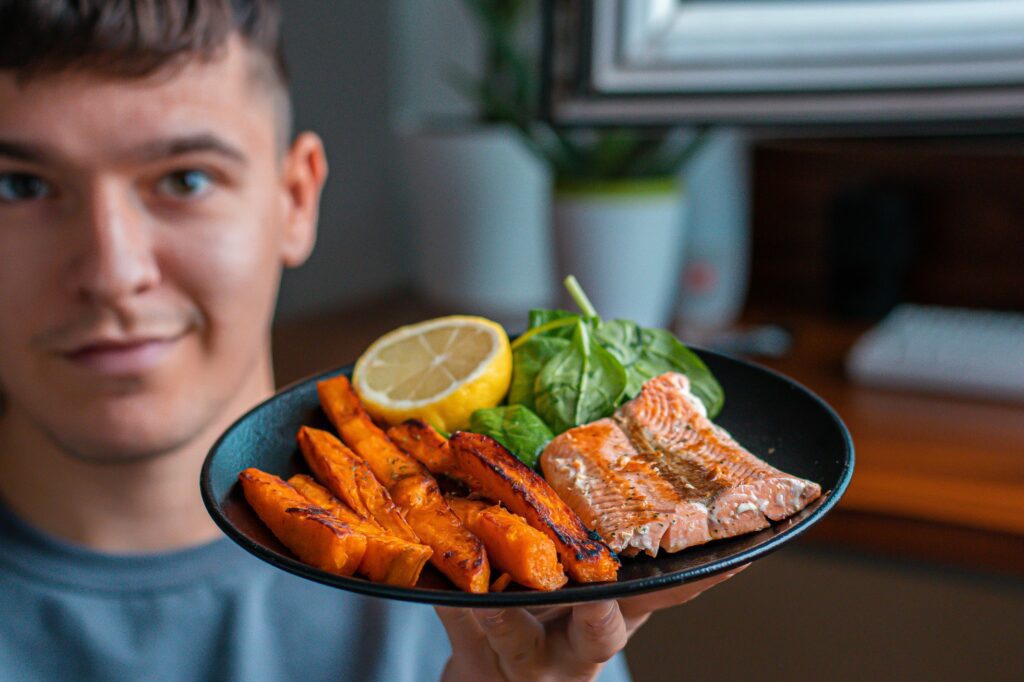
Here are the best seafood to eat in their own way:
| Frozen | fish sticks, rainbow trout, shrimps, and herring |
| Fresh | salmon, shrimps, mackerel, Pollock, catfish, and scallops |
| Canned | white or light tuna, sardines, and salmon |
| Smoked | Oysters, Swordfish, Bluefish, Mackerel, and Salmon |
6. Is a Versatile & Flexible Diet
The pescatarian diet is one of the most flexible and versatile diets of all. In the same box as Mediterranean and Paleo diet, it has a really good philosophy and food choices, to begin with. None of these diets are macronutrient or calorie-restrictive, which is great.
The pescatarian diet excludes all meat but does enable fish and seafood plus eggs & dairy are optional too.
This means you can eat a plant-based dominant diet such as a vegan one, full of antioxidants and great for heart health, reducing inflammation and chronic pain, while at the same time being able to run off the potential nutritional deficiencies of protein, zinc, B12, and omega 3 fatty acids.
If you are in an environment where high-quality fish is available, then you might want to try out this diet. Having a variety of seafood like oysters, crab, mussel, and lobster with a bunch of veggies on your plate is the way to go. Putting some herbs like oregano on it, a little bit of lemon, some cheese and wine is the perfect pesco and mediterano friendly option.
Mercury Toxicity
Since the pescatarian diet emphasizes fish and seafood, you should know about mercury toxicity.
Excessive consumption of mercury can lead to serious problems and toxicity in humans. Mercury is part of the fish and its toxicity is the kind of metal poisoning detrimental to humans.
Different fish have different levels of mercury, so knowing your fish can do you a great favor.
Mercury toxicity can have detrimental effects on the digestive, immune and nervous system, as well as kidney and lung problems.
- Some related symptoms of mercury toxicity are difficulties with hearing or speech, bad coordination, nerve loss, changes in vision, and muscle weakness.
- Since it is excreted through the urine, mercury can be flushed out by drinking more water, but either way you should avoid exposing your organism to higher levels of it since some damage may be irreversible.
Here is a list of a higher, medium, and lower mercury fish. Pregnant or breastfeeding women and children should stay away from high-mercury fish options, and for most people, reducing the intake of this fish is better in general.
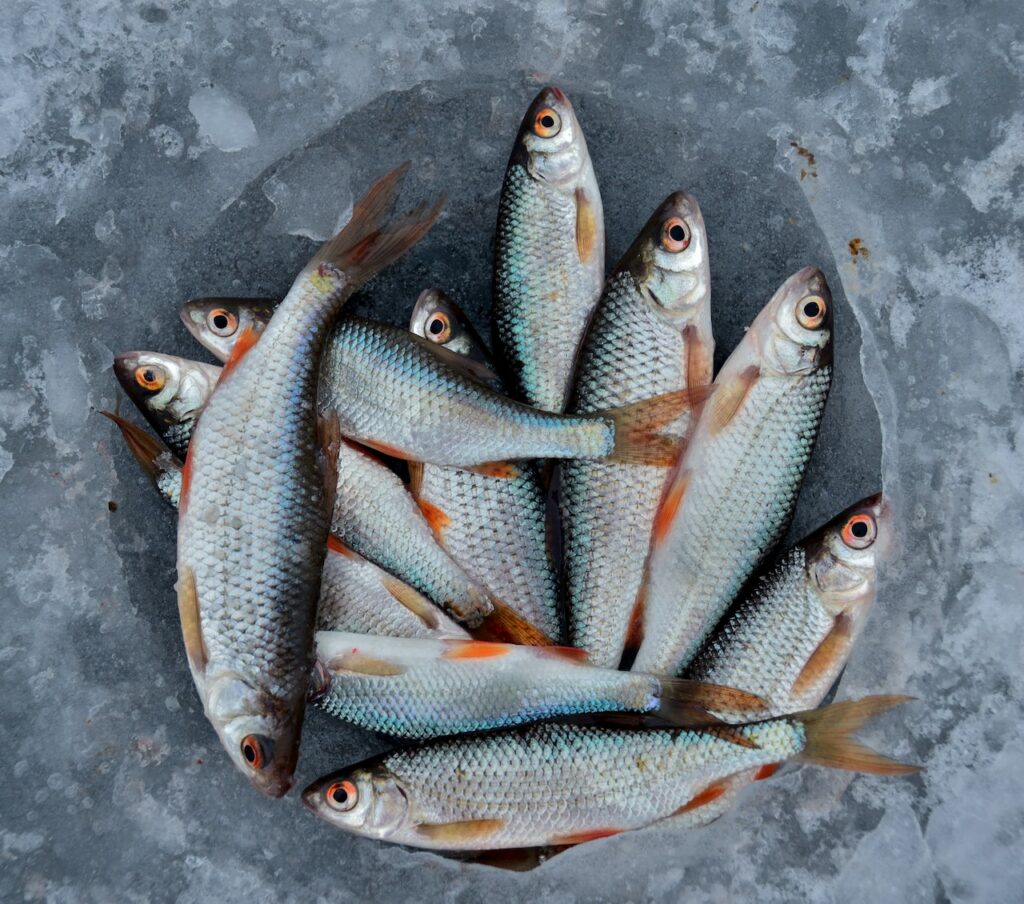
| Low Mercury | Medium Mercury | High Mercury (avoid, eliminate) |
| North Mackerel, Catfish, Crab, Haddock, Herring, Oysters, Salmon, Squid, Shrimp, Whitefish, Pollock, Sardines, Crayfish, and Trout | Skate, Canned Light Tuna, Striped bass, Monkfish, Mahi Mahi, Snapper, Alaskan Cod, Perch and Lobster | Swordfish, Tilefish, Albacore, Ahi Tuna, King Mackerel, Bluefish, Halibut, Ocean Perch, Yellowish Tuna, Grouper, Shark, Orange Roughly |
Mercury is transformed into methylmercury by bacteria, which then accumulates into higher concentrations. Usually, the biggest fish which eat other smaller fish have the highest mercury amounts.
Other factors that play role in mercury toxicity are person’s exposure, dosage, amount, form, developmental stage of the exposed one, duration of exposure, type of absorption (eating, inhaling, or dermal), and many others.
Pescatarian Diet | Pros and Cons
There are some pros and cons to each diet. Here are a couple of pros and cons, that comes with pescatarian.
Pescatarian PROS
Pescatarian CONS
- Versatile & Practical – a very broad range of foods, a wide variety of nutrients, and practicality.
- Simple & Easy – the guidelines are basically to avoid meat, eat all plants and fish, optionally eggs and dairy.
- Health Benefits – lots of benefits like anti-inflammatory, heart healthy, brain supportive & disease prevention.
- Fat-loss & Heart Health– pescatarian diet has similar elements to the Mediterranean one, and it excludes saturated fat meats, which may contribute to a healthier cardiovascular system and fat loss.
- Balanced Diet – Since it isn’t too restrictive, not in calories nor in macronutrients, it is easy for anyone to follow it, plus it offers all macronutrients.
- Mercury Toxicity – fish eaters who are not educated on seafood and like to get a lot of seafood protein may run into mercury toxicity. This is why it is crucial to avoid mercury-rich fish and eat lower or moderate mercury-containing fish, plus educate yourself on it and consult your doctor.
- Nutrient Deficiencies – Possible deficiencies to run on the Pescatarian diet are Zinc, B12 vitamin, and Omega 3 fatty acids. Other minerals such as calcium, copper, potassium, and choline may be problematic if you only eat a limited number of foods.
- Vegan Junk food – it’s easy to run into vegan junk food which might be even more detrimental than regular meat junk food. Foods like vegan burgers, sodas, desserts, crackers, and sweets can have other components that are bad for your health.
- Pretty Expensive – eating meat vs eating seafood can be pretty pricey. In reality, having a great seafood store that brings tons of fish & seafood and sells in bulk can be sold at a reasonable price. But most of the seafood takes more preparation and eating at restaurants will cost more.
Is the Pescatarian diet healthy?
One of the most common questions on this topic is whether the diet itself is healthy compared with some of the popular ones. Now from a nutritionist’s perspective, when it comes to health it is all about food choices, cooking habits, genetics, and moderation.
Eating wild-caught salmon with fresh vegetables, a combination of beans & legumes, with fruits, nuts, and dark chocolate for dessert is a healthy way to go. Eating vegan junk food, processed wheat, and refined sugars, which technically is still pesco-friendly, is not a healthy option.
Alternative Foods against deficiencies
To make sure you don’t run into nutritional deficiencies you can supplement or eat smarter. I would always choose to optimize my diet first and then if I’d need to, will add some supplements to it.
Make sure you eat lots of different foods, including different types of veggies, fruits, nuts, and legumes, and add some seafood to boost your intake of zinc, vitamin D, and omega-3 fatty acids.
- Zinc Rich Foods – shellfish, chickpeas, legumes, dark chocolate, crab, lobster, and eggs
- Vitamin B12-rich foods – add optional foods such as dairy, milk, eggs, fish, and fortified cereals
- Omega 3 rich foods – any fish, seafood, nuts, seeds, avocado, tofu, and navy beans
Research Limitations
*Studies have some limitations, important to evaluate the validity of their results. Here’s a highlight of some and NOT ALL studies (and limitation), shown in this article, for context.
- Limited clinical and preclinical evidence of omega 3 supplementation effects in specific populations.
- Further research needed to identify the main anti-inflammatory and anti-hypertensive mediators for omega 3 FA effects independently.
- Some measures were taken by interview with structured questionnaire.
Best Pescatarian Supplements
The Pescatarian diet is not restrictive in its structure, meaning people who follow the diet are not likely to develop some serious deficiencies. Now deficiencies are possible with every diet and depend on the foods we choose to eat.
Here is a list of some nutrients people might lack when following a Pescatarian diet. These are also the best nutrients to supplement with, to avoid deficiency.
Vitamin B-12
Omega 3 Fish Oil
Cal-Mag-Zinc
Vitamin D + Iron
Important neurocognitive supporters, associated with cognitive function, mood, and sleep
Although the Pescatarian diet is rich in fish and Seafood which comes with high omega 3 content, those who avoid seafood might want to supplement with Omega 3, one of the best natural anti-inflammatory alternatives.
Calcium, Magnesium, and Zinc. These three minerals are crucial for brain development, nerve transmission, immune function, healthy heart and strong bones.
Vitamin D and Iron are important minerals that play a major role in bone metabolism and development, sexual function, immune function, and heart health.
conclusion
The Pescatarian diet is a style of eating similar to the Vegetarian diet, which allows eating fish and seafood. It is also similar to a non-restrictive and healthy dieting style, such as the Mediterranean one. This diet emphasizes the consumption of predominantly organic, whole food like fruits, nuts, vegetables, beans, legumes, and more. The diet comes with many benefits linked to longevity, weight loss, versatility, and heart health.
Frequently Asked Questions
Is the pescatarian diet a good and balanced diet?
Yes, pescatarian diet is actually one of the most practical, sustainable and well-balanced diets. Along with Mediterranean and Paleo style of eating, it deserves an A+ for its practicality. The idea is that we can still follow a plant-based dominant lifestyle, but include some seafood options in the mix to reduce the risk of running into nutritional deficiencies.
Is a pescatarian diet better than keto or vegan?
When it comes to comparing diets, the individual response and needs are very different. All we can say is, pescatarian diet is easily sustainable and more practical diet than keto or vegan diet. This is because with the ketogenic diet we have extremely low amounts of carbohydrates, which aren’t good for some populations. In vegan diet we may run at a risk of protein and minerals deficiencies. With proper supplementation we can reduce this insufficiency, but for the general populations, non-restrictive diets like Mediterranean and pescatarian work better.
Is it possible to build muscle on the pescatarian diet?
Yes, sure. When trying to build muscle, nutrition wise all you need to care is getting sufficient caloric surplus (300 kcal) and around 1.2-1.7 grams of protein per kg of bodyweight daily. The pescatarian eater can get this proteins with fish, seafood, eggs, nuts and dairy easily.
Is it true that the pescatarian diet is high in mercury?
Both yes, and no. Pescatarian diet doesn’t necessarily mean we eat a ton of fish.
Some fish have higher mercury scores, which should be avoided or eaten in smaller amounts. Such fish include: swordfish, albacore, shark, bluefish, halibut, yellowfish tuna, king mackerel, tilefish, ahi tuna etc.
Other seafood options that are low-mercury, and can be eaten more often include: herring, shrimp, whitefish, pollock, salmon, sardines, north mackerel, trout, crayfish, squid, etc.
Avoiding high mercury fish is a good practice to avoid mercury toxicity.

